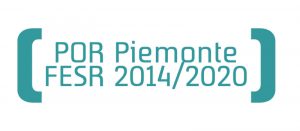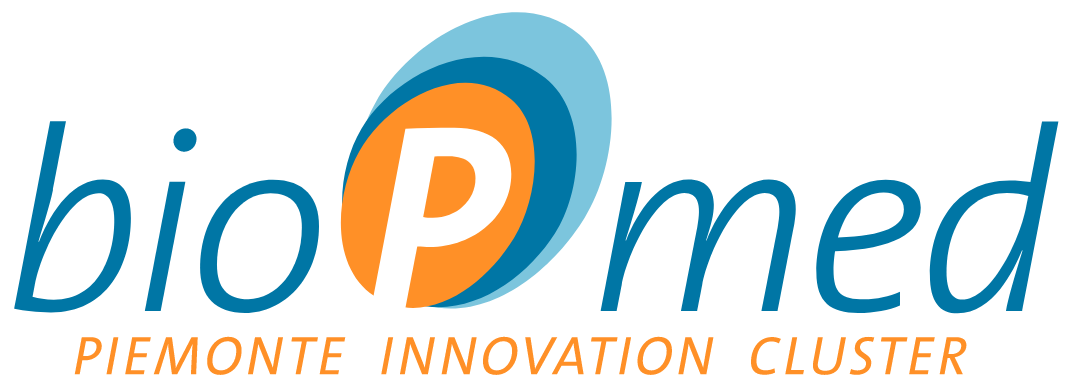Details
Project title: Design synthesis and characterization of fluorescent probes for molecular diagnostic applications
Acronym: FluoMed
Abstract: The project aims to develop fluorescent contrast agents, also known as fluorescent probes, for both diagnostic and surgical applications to facilitate the complete removal of tumors.
Name: Paola Puppo
Organization: FluoDy Srl
Email: paola.puppo@fluody.com
Phone: 0174 670 381 | 335 533 0228
Lead Partner: FluoDy Srl
Other partner: Bracco Imaging Spa
Type: Industrial research and/or experimental development project
Line: A
Theme: Life Science
Duration: 24 months
Total project cost: 600.000 €
Total contributions required: 258.000 €
Status: ongoing project

THE DESIGN IDEA
The field of contrast agents for in vivo imaging procedures is moving from traditional perfusion imaging to molecular imaging, i.e., toward the development of molecules that can provide information about alterations in biological processes at the cellular, sub-cellular, and molecular levels. Such technological developments may find its application in the field of oncology, where it is possible to visualize particular features of tumor tissues by making specific the accumulation of contrast agents in the pathological tissue.
The main technologies with sufficient sensitivity to perform molecular imaging studies are those based on radioactive tracers (PET and SPECT) and fluorescence imaging, which exploits the properties of certain molecules to absorb electromagnetic radiation and re-emit it at lower energy (increasing wavelength). Fluorescence imaging has attracted particular interest from the standpoint of market application in both diagnostic and surgical settings because of a number of advantages over nuclear imaging techniques. Such benefits include:
- the high accessibility;
- the limited invasiveness for the patient;
- the significantly reduced cost of the probe and equipment;
- lower cost of analysis.
In particular the project aims to develop a series of fluorescent probes with high tumor specificity, capable of assisting the surgeon in complete tumor resection procedures by increasing visualization of the margins of the lesion itself and guiding biopsy of nonsuspicious tissue near the primary lesion.
DEVELOPMENT GOALS
The FluoMed project possesses several points of originality and innovation for molecular diagnostics.
Specifically wants:
- synthesize new fluorophores with a polymetin structure in the near-infrared and visible by creating a library of molecules that will be studied to evaluate their solubility in water, brightness, photostability and affinity toward albumin;
- identify new tumor markers, the expression of which will also be validated on human biopsy specimens, of cervicofacial and colorectal cancers that can improve the diagnostic/intra-operative efficacy of the probes;
- to synthesize new peptide nature vectors with high affinity for selected tumor markers;
- synthesize fluorescent probes obtained from the combination of the vectors and fluorophores selected in the previous steps.
This supply chain will therefore enable the production of completely original molecules that will be evaluated through in vitro and in vivo preclinical studies to determine their efficacy and potential clinical translation.
It is also intended to develop a fluorescent probe containing two different fluorophores that are perfectly identifiable in mixture and suitably optimized so that one has high brightness and less tissue depth (VIS fluorophore) to provide the surgeon with a powerful tool to visualize tumor margins with high spatial resolution, while the other (NIR fluorophore) is able to allow the surgeon a broader visualization of the tumor lesion to be removed.
SCIENTIFIC VALUE AND POTENTIAL ECONOMIC IMPACT OF THE PROJECT
The use of the same agent for both diagnostic and surgical applications would help to achieve lower probe market prices with an overall benefit, both for the industry, which would see an increase in the market size of its product, and for health systems and patients, who would have an effective tool for both applications at a lower price.
The high degree of innovation of the proposal, if supported by the expected results, will ensure the publication of several scientific articles in international journals in the field. In addition, again depending on the results obtained, it is very likely that the research activity may allow the submission of international patents to protect the intellectual property and industrial development of the probes produced.
Systematic use of a fluorescent probe in the surgical setting will increase the standardization of oncologic surgery procedures resulting in fewer patients having to be recalled for a second surgery. The benefits, to patients and to the health system economy, from the positive results of this project represent an opportunity worth investing in.
